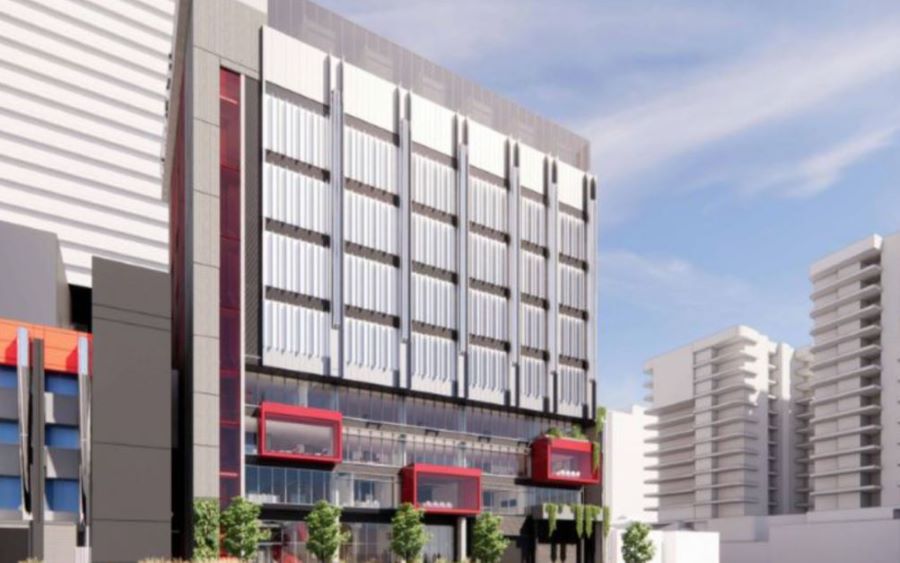Data centre operator NextDC has filed plans for the second stage of its innovation and technology precinct in Brisbane’s inner-city Fortitude Valley.
The proposal is the next step in the creation and expansion of the ASX-100 listed technology company’s headquarters.
It comprises a nine-storey building with four levels of office space, three levels of data halls and two levels for services and plant equipment as well as a one-level basement.
The development application has been lodged with the Brisbane City Council for a 4671sq m site at 454 St Pauls Terrace, 57 and 61 Misterton Street and 216 Constance Street.
Under the plans, it would be built adjacent to NextDC’s existing B2 Brisbane data centre, which was developed in 2017 with the conversion of an existing 3-4 storey office building into a data centre comprising secure storage of computer system servers with associated office space and car parking.
“The proposal represents the next component of the NextDC Innovation and Technology Precinct, an important opportunity to deliver a globally-renowned precinct to support knowledge and technology industries within Brisbane,” the planning documents said.
“Since establishment of the existing NextDC B2 data centre, NextDC has been in the process of acquiring adjacent properties with an intent to expand upon the existing B2 data centre building to create a precinct-scale development that will ultimately act as NextDC’s headquarters and create a significant precinct for digital, innovative infrastructure and technology.
“As the second stage of the precinct, the proposal will build on the success of the stage 1 data centre facility and provide further critical infrastructure and complimentary facilities to support Brisbane’s knowledge and technology industries, and the growth of the digital economy.
“The precinct is an important component of Brisbane’s knowledge corridor and a place for digital, innovative infrastructure and technology that supports the economic role and function of the city.”
A future third stage is also planned but will be subject to a separate development application.

The stage 2 application is for research and technology industry, office, educational establishment, special industry environmentally relevant activity uses.
According to the documents, the Architectus-designed scheme has been reduced from an initial 15-storey proposal and is “the culmination of an extensive period of engagement and prelodgement technical assessment with council” to advance the next stage of the precinct.
The built form designed to ensure a variety and visual interest in built form, with overlaying elements, such as screening, modelled projections and recessed glazed facades.
“Aligning visually with other NextDC facilities across Australia, the building is trimmed in prominent shades of red, grey and black which ties into the unified corporate identity of the company.
“The contents and data stored by NextDC is sensitive,” the DA said. “As such, the building is equipped to manage a multitude of security possibilities to safe-guard client content. Yet, this is achieved through a subtle and non-invasive manner.”
The special industry component of the proposal is limited to back-up power generation, which will be on standby in the event of power failure.
The building’s facade has been designed to contribute to the cityscape through the inclusion of a “high-tech material palette” and would feature a set of boxes or pods that “push through this plane to provide special rooms, outdoor deck space and planters, which animate and interact with the streetscape”.
“The building design serves both the building occupants and the public realm, connecting the building to the streetscape, through the integration of elevated and ground landscape, and external break out areas,” the documents said.
The International Data Corporation forecasts that by 2025 the global datasphere will grow to 163 zettabytes—the equivalent of a trillion gigabytes.
Along with the Federal government’s focus on data sovereignty and the growth of AI and autonomous technologies in recent years, demand for secure data centres in prime locations has never been higher and is continuing to grow.
Article source: www.theurbandeveloper.com
